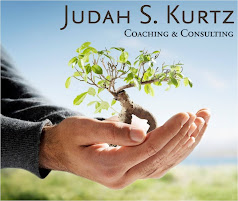For many of us, our minds gravitate toward (and perhaps even obsess over) what’s not working, who’s a problem, what’s missing, where we’ve failed (or risk failing), and how we are dissatisfied with what is. We wonder why it is this way, and we spend a lot of time attempting to get to the root. Is it effective? Does it produce better results? Sometimes. So we go back to that method over and over.
Even if we typically have a more positive point of view, we worry about, fear, and anticipate what might potentially go wrong – and strategize ad nauseam on how to minimize the risk. We might even embrace the concept that suffering is noble – that it is just part of us or part of life, and that nothing is going to change that. Perhaps we believe that true success requires it… sacrifice, struggle, challenges overcome.
The bottom line is: suffering is something we’ve gotten used to, starting from a young age. Yet, I contend that suffering is not only unnecessary, but is a habit. It’s the default place we go because it’s familiar and has been part of our experience for so long. However, with practice, we can minimize our experiences of suffering by shifting how we think.
Where we choose to direct our attention, thoughts, and actions has an impact on our experience of life. We attract into our world what we focus on. When we focus on the negative, that’s what we get. Conversely, when we choose to look from a positive point of view, we are more likely to get that.
We have a choice. We can shine the light on what we don’t like and don’t want. Or, we can accept what is, then focus on what we want to create – not as a fix-it, but as a burning desire to invest in what’s possible.
Practice, Practice, Practice
Here are a few suggestions of things to try. Pick one or two and see where it takes you.
- Ask yourself what you are tolerating, and where your integrity is out, and begin eliminating that physical and mental clutter from your life.
- Consider what you are saying "yes" and "no" to, and begin creating some boundaries.
- Identify and tame that pesky self-talk that is disempowering you by reading Taming Your Gremlin, by Rick Carson.
- Alter your mental wiring by practicing neuro-linguistic programming (NLP).
- Focus on your self-care and make "self-ishness" a priority.
- Play with intentionality and who you are choosing to "be" on a daily basis.
- Take the Wheel of Life assessment and identify how satisfied you are with the various areas of your life.
- Look back at what you’ve accomplished over the past 12-18 months, and create a plan for the next 1-5 years that is based on your values and what you really want.
- Play with the No-Lose Decision-Making Process.”
- Hire a coach.
“Suffering is not good for the soul, unless it teaches you to stop suffering.” ~Jane Roberts






